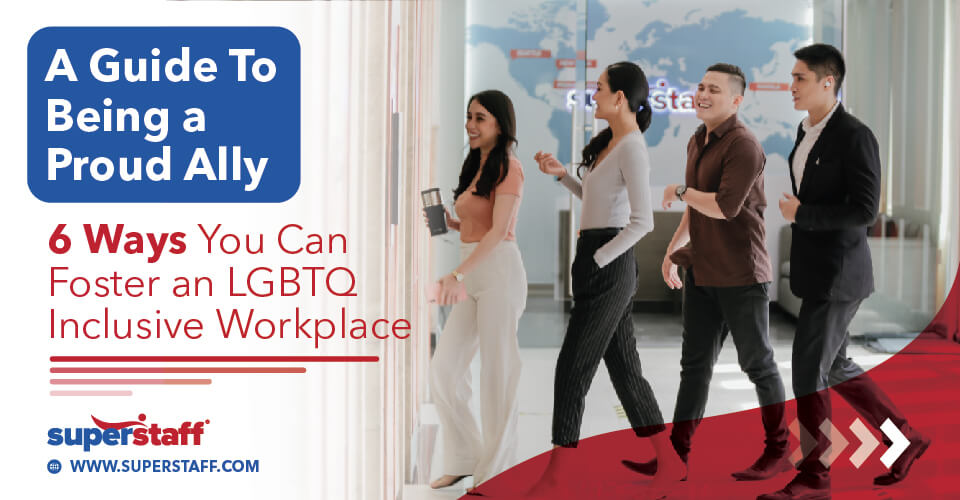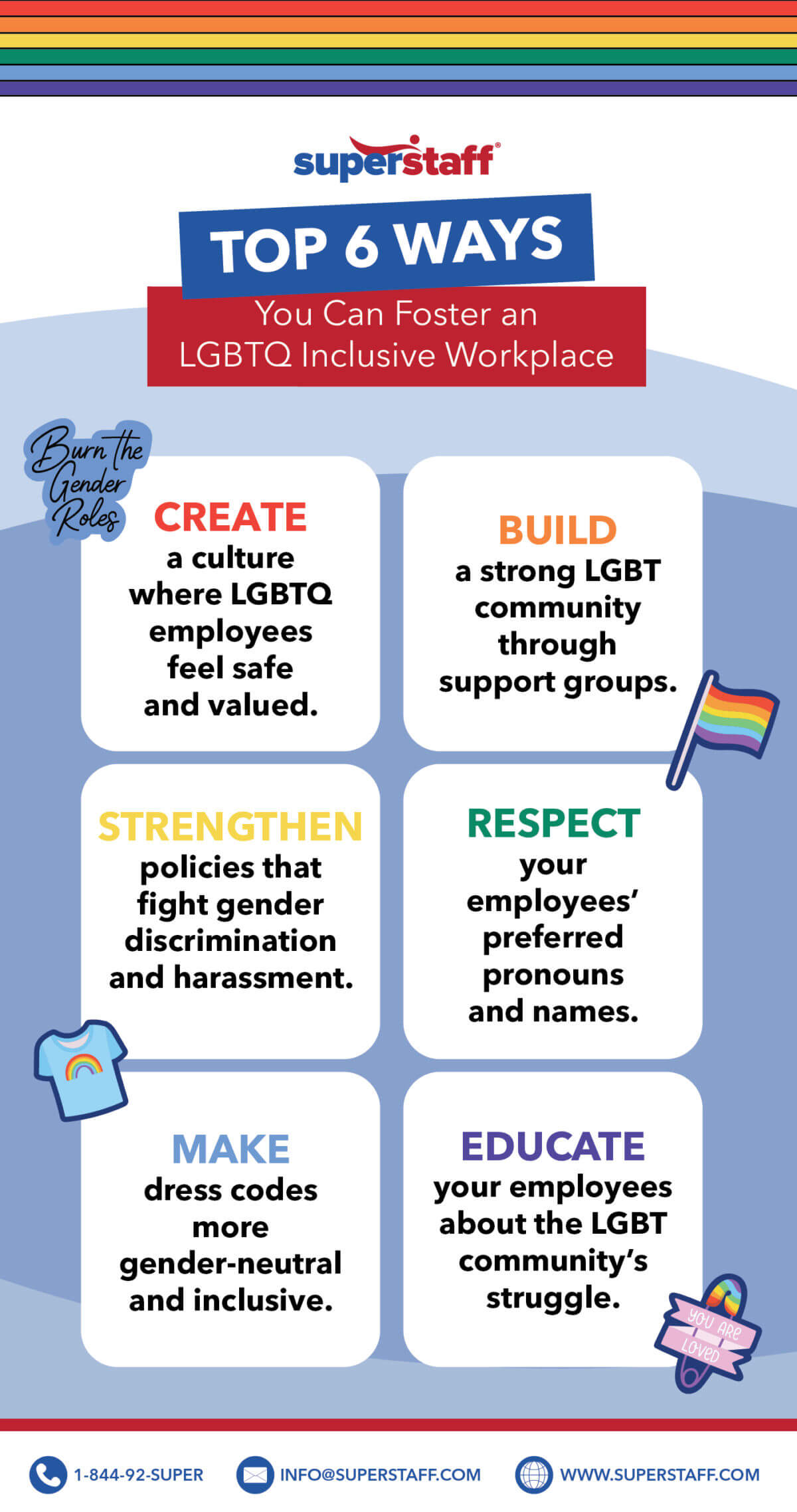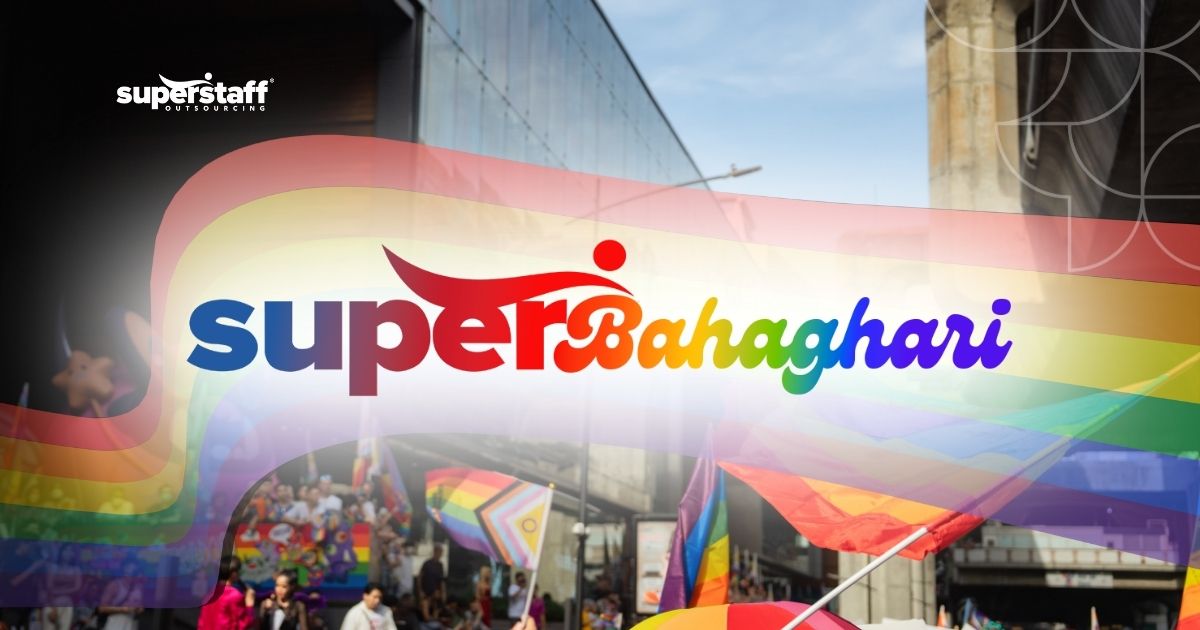
Pride is a celebration of many things, from courage and resilience to uniqueness and camaraderie. But at the same time, it is also a protest, a fight for gender equality and social justice. Most importantly because homophobia and transphobia remain harsh realities for our LGBTQ employees.
Yes, there are companies now vocal about their support. However, the current climate demands more than support. Our LGBTQ employees need allies in us.
True allies go above and beyond to fight for an LGBTQ-inclusive workplace where all employees are free to be themselves without fear of discrimination or prejudice.
6 Ways Your Company Can Be an Ally to Your LGBTQ Employees
Our staff can only reach their potential in a safe and respected environment. When our LGBTQ employees are less stressed about how others perceive them, they will work more effectively with their team.
At the same time, LGBTQ diversity and inclusion in the workplace can also help you attract younger talents. Diversity, Equality, and Inclusion (DEI) and gender liberation are among the top traits that Gen-Z job seekers look for in employers.
This LGBTQ History Month, we’ve rounded up a few ways to help you foster a more LGBTQ-inclusive workplace.

Create a culture where LGBTQ employees feel safe and valued.
The simplest yet most effective way to be an ally is by making the workplace a safe space where our LGBTQ staff can be their most authentic selves.
Let’s embrace openness and celebrate their self-expression. But in doing so, remember that the issue of gender identity politics is nuanced. Complexity and intersectionality are typical discussions on sexual orientation, gender identity, and gender expression.
For instance, in an LGBTQ-inclusive workplace, we cannot simply make assumptions about who they are based on their appearance or appearance.
We also need to recognize that being out is also a choice. Some people are confident enough to be “out” in the office, while others choose not to disclose their gender identity at work for fear of discrimination.
Whether our LGBTQ employees are out and proud or still finding the courage to come out of the closet, it’s essential to show that we are championing LGBTQ pride in the workplace. Let us make our allyship visible by organizing company-wide Pride and LGBTQ History month celebrations. We can also wave the rainbow flag by participating in pride marches and sponsoring other LGBTQ community events.
2. Build a strong LGBT community through support groups.
Building a solid workplace network, such as support groups and gay-straight alliances, is vital in an LGBTQ-inclusive workplace. Beyond just being a platform to make meaningful friendships, these affinity groups can give their members a voice and raise awareness of LGBTQ inclusion in the workplace.
We can stand for their initiatives by providing resources to help them grow. Another way of showing support is by incentivizing group leaders for their efforts. We can even boost group membership by offering benefits packages for those who want to join.
Most importantly, our role as business leaders is to address the issues they raise. We can do this by giving them a seat at the table regarding decision-making. For instance, this could mean having LGBTQ liaisons in upper management and representatives in committees such as employee engagement.
3. Strengthen policies that fight gender discrimination and harassment.
Companies already have anti-discrimination and anti-harassment policies. However, they mainly apply to straight or cisgender employees.
With almost half (46%) of LGBTQ employees experiencing unfair work treatment, it’s high time to strengthen these policies to ensure that we have an LGBTQ-inclusive workplace.
Expanding our policies to cover discrimination based on sexual orientation and gender identity is not just the right thing to do. The law also mandates it under Title VII of the Civil Rights Act. Our reinforced policies should prohibit gender bias in recruitment and promotions, bullying based on gender identity and sexual orientation, cat-calling, harassment, and other inappropriate sexual behavior in the workplace.
Additionally, we could also create LGBTQ-specific policies. For example, an approach that allows transgender people paid leave for gender affirmation surgery. This is a more straightforward way to show our support for them.
4. Respect your employees’ preferred pronouns and names.
Pronouns are a big deal for LGBTQ people, especially those who identify as non-binary, transgender, or gender-fluid.
Our LGBTQ employees must overcome a lot to be comfortable in their bodies. Getting misgendered, or being addressed with the wrong pronouns, shows a lack of awareness or, worse, respect for their plight. Every time we do this, it affects our LGBTQ employees’ self-esteem and job satisfaction.
Deadnaming, or calling them by their birth names, is just as offensive. While there is growing acceptance of using appropriate pronouns for employees, there’s still a lack of awareness about the importance of chosen names.
Birth names carry a lot of emotional baggage for the LGBTQ community. Feelings of guilt, shame, humiliation, and confusion often stem from having a birth name that does not match their gender. Courts are ruling that deadnaming and misgendering employees can also amount to illegal workplace harassment.
Let’s always lead by example. Aside from asking employees their preferred pronouns, we can also use gender-inclusive language such as “Hi Everyone” instead of “Hi Guys” and “Friends and Colleagues” instead of “Ladies and Gentlemen.”
5. Make dress codes more gender-neutral and inclusive.
In 2014, General Motors earned praise when its CEO Mary Barra junked a 10-page dress code and replaced it with just two words: “dress appropriately.”
We need that kind of thinking to foster an LGBTQ-inclusive workplace. Dress codes often categorize employees as men or women, but LGBTQ people don’t need to adhere to these gender norms to appear professional.
Breaking dated gender stereotypes and relaxing policies on what our employees can wear in the workplace allows our LGBTQ employees more freedom to express themselves.
While it’s true that, as employers, we have the right to set guidelines for our employees, we can still enforce policies allowing our LGBTQ employees to dress as they identify.
6. Educate your employees about the LGBTQ community’s struggle.
More than policies and other initiatives, what matters most is our commitment to educating employees on LGBT inclusivity in the workplace.
Microaggressions (intentional or unintentional verbal and non-verbal slighting), such as asking invasive questions and making comments like “That is so gay,” can be easily avoided if our employees are more educated.
As their managers, we also need to make a conscious effort to stay objective in all our decisions. This entails reviewing our policies, for instance, ensuring unbiased hiring processes to promote LGBTQ diversity in the office.
When it comes to our LGBTQ staff, they must know the proper venues for reporting discrimination. Training managers to look out for signs of discrimination and harassment is also a way of protecting our LGBTQ employees.
At the core, we need to educate our staff on the struggles of the LGBTQ community. The best way to do this is by inviting our LGBTQ employees to talk about their stories and share their struggles.
One Community, One Love, One Team
Quotas and other metrics cannot simply measure LGBTQ diversity and inclusion in the workplace. It’s about allowing them to be themselves. It should not be about how they dress, act, or speak. It should be about how they can contribute to the company.






